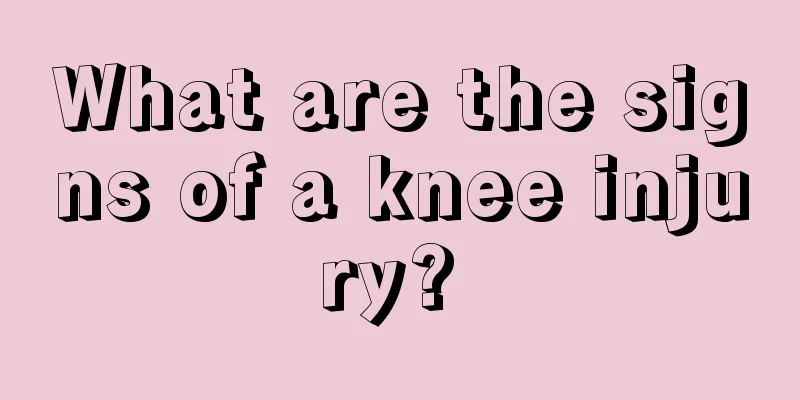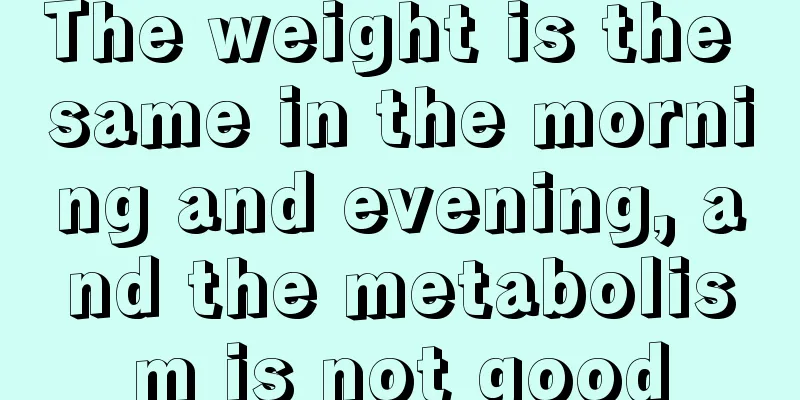What are the signs of a knee injury?

|
Because people nowadays run and jump all the time, and often do not pay attention to exercise, or do not do warm-up exercises during activities, it is easy to cause knee injuries. Once the knee joint is injured, it is necessary to determine whether there is a history of chronic disease, or whether there has been a knee disease before. In addition, in the diagnosis of symptoms, it is usually accompanied by severe joint pain, local bruising, congestion, and local redness and swelling. Symptoms and signs 1. Only some acute injury cases have a history of trauma, while chronic injury cases have no clear history of trauma. 2. It is more common in athletes and manual laborers, and more common in men than in women. 3. After the injury, the knee joint is extremely painful and cannot be straightened. Swelling occurs rapidly and there is blood accumulation in the joint. 4. After the acute phase, the disease enters the chronic phase. At this time, the swelling is no longer obvious and the joint function has also recovered, but the joint pain is always felt and there is a popping sound when moving. Sometimes, when moving, you suddenly hear a "click" sound and the joint cannot be straightened. After enduring the pain and swinging the calf a few times, you hear a "click" sound again and the joint can be straightened again. This phenomenon is called joint locking, which can occur occasionally or frequently. Frequent attacks of locking affect daily life and exercise. 5. The signs of the chronic stage include joint space tenderness, bouncing, knee flexion contracture and weakness of the vastus medialis muscle. The tenderness point can be detected by palpating along the joint space. According to the location of the tenderness point, it can be roughly determined whether it is a tear of the anterior horn, body or posterior horn. The horizontal splitting of the anterior horn can be seen bouncing at the knee socket when the knee joint is flexed and extended. The knee flexion contracture side indicates that the meniscus is embedded under the femoral condyle and is difficult to unlock for a long time. The atrophy of the vastus medialis muscle is disuse. This sign indicates that the internal function of the knee joint is disordered. |
<<: What are some effective pain relief methods for gallstones?
Recommend
Which liver cancer patients are not suitable for interventional treatment? 7 types of people are not suitable for interventional treatment of liver cancer
Interventional treatment of liver cancer is to in...
There is phlegm in my throat that I can't cough out
When the seasons change, many people are prone to...
Side effects of chemotherapy for breast cancer
Breast cancer is one of the most effective solid ...
Kidney cancer can easily be confused with other diseases in the late stage
Kidney cancer is easily confused with other disea...
Methods of treating throat cancer with traditional Chinese medicine
The magic of herbal medicine has never stopped fr...
What to do if your nose is oily
When summer comes, many friends will have oily no...
Rapeseed oil yield
Oil, salt, sauce and vinegar are indispensable in...
Why does my butt hurt?
Buttock and heel pain is a common phenomenon in d...
Will normal wolfberry lose color when exposed to cold water?
Wolfberry is a health product that everyone is fa...
How to clean air conditioner blades
Air conditioning is a must-have electrical applia...
What kind of exercises can patients with colorectal cancer do
Colorectal cancer is a tumor disease that is harm...
How long can you live with abdominal metastasis of gastric cancer
How long can a patient live after gastric cancer ...
What are the consequences of teratoma recurrence
Ovarian teratoma is a common and frequently occur...
What foods are good to eat to prevent liver cancer? These three kinds of bamboo shoots can prevent liver cancer
There are many benefits of eating bamboo shoots i...
What kind of painkillers are suitable for patients with advanced bone cancer to take for a long time
When it comes to cancer, everyone is very scared....









